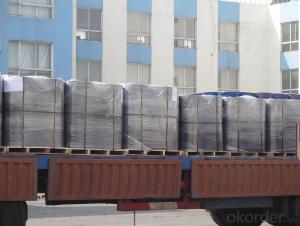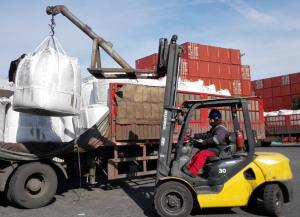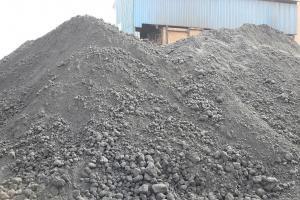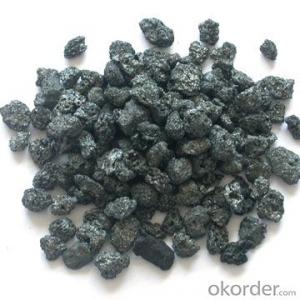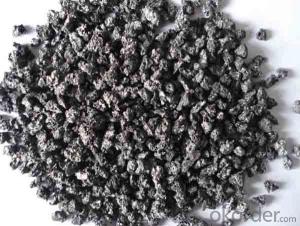Calcined Petroleum Coke 98.5%-Coke Fuel of CNBM in China
- Loading Port:
- Tianjin
- Payment Terms:
- TT OR LC
- Min Order Qty:
- 1 m.t.
- Supply Capability:
- 10000000 m.t./month
OKorder Service Pledge
OKorder Financial Service
You Might Also Like
1.Structure of Calcined Petroleum Coke Description
Calcined Petroleum Coke is made from raw petroleum coke,which is calcined in furnace at a high temperature(1200-1300℃).CPC/Calcined Petroleum Coke is widely used in steelmaking,castings manufacture and other metallurgical industry as a kind of recarburizer because of its high fixed carbon content,low sulfur content and high absorb rate.Besides,it is also a best kind of raw materials for producing artifical graphite(GPC/Graphitized Petroleum Coke) under the graphitizing temperature(2800℃).
2.Main Features of the Calcined Petroleum Coke
High-purity graphitized petroleum coke is made from high quality petroleum coke under a temperature of 2,500-3,500°C. As a high-purity carbon material, it has characteristics of high fixed carbon content, low sulfur, low ash, low porosity etc.It can be used as carbon raiser (Recarburizer) to produce high quality steel,cast iron and alloy.It can also be used in plastic and rubber as an additive.
3. Calcined Petroleum Coke Images
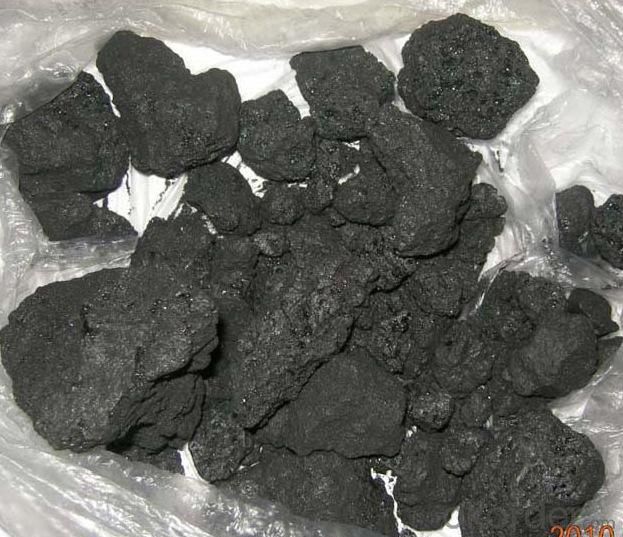
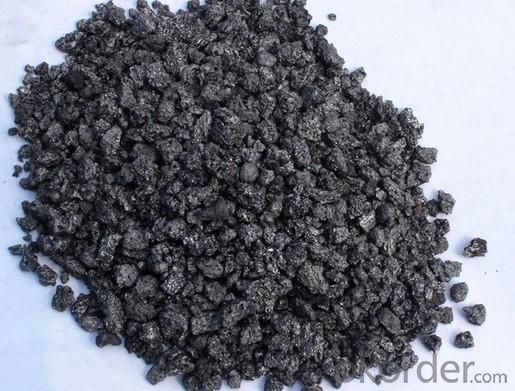
4. Calcined Petroleum Coke Specification
| Place of Origin: | China (Mainland) | Type: | Petroleum Coke | Sulphur Content (%): | 0.5 |
| Ash Content (%): | 0.4 | Fixed Carbon (%): | 98.5 | Moisture (%): | 2 |
| Volatile Matter (%): | 0.3 | Brand Name: | cnbm |
5.FAQ of Calcined Petroleum Coke
1). Q: Are you a factory or trading company?
A: We are a factory.
2). Q: Where is your factory located? How can I visit there?
A: Our factory is located in ShanXi, HeNan, China. You are warmly welcomed to visit us!
3). Q: How can I get some samples?
A: Please connect me for samples
4). Q: Can the price be cheaper?
A: Of course, you will be offered a good discount for big amount.
- Q: Is carbon a conductor?
- It depends on what kind of material, the cartridge is the conductor, and the coal is not the conductor
- Q: What is the greenhouse effect?
- The greenhouse effect refers to the process by which certain gases in the Earth's atmosphere trap heat from the sun and prevent it from escaping back into space. This natural phenomenon is crucial for maintaining the planet's temperature within a range suitable for life. However, human activities, such as burning fossil fuels and deforestation, have intensified the greenhouse effect, leading to global warming and climate change.
- Q: What are the impacts of carbon emissions on human respiratory diseases?
- Human respiratory diseases are significantly affected by carbon emissions, especially those resulting from the burning of fossil fuels. The release of carbon dioxide and other greenhouse gases into the atmosphere contributes to climate change, which in turn impacts air quality and worsens respiratory conditions. One of the main outcomes of carbon emissions is the rise in air pollution. When fossil fuels are burned, various pollutants such as nitrogen oxides, sulfur dioxide, and particulate matter are released. These pollutants can irritate and harm the respiratory system, triggering and worsening respiratory diseases like asthma, bronchitis, and chronic obstructive pulmonary disease (COPD). They can also lead to the development of respiratory infections and reduce lung function, making individuals more susceptible to respiratory illnesses. Respiratory health is further affected by climate change, which is fueled by carbon emissions. As temperatures rise and weather patterns change, allergens and air pollutants proliferate, causing more frequent and severe allergic reactions and exacerbating respiratory conditions. Climate change can also extend the pollen season and increase the production of mold spores, leading to asthma attacks and other respiratory symptoms. Additionally, carbon emissions contribute to the creation of ground-level ozone, a harmful pollutant. Climate change enhances the chemical reactions that produce ozone due to higher temperatures and increased sunlight. Ground-level ozone can irritate the airways, resulting in coughing, shortness of breath, and chest pain. It can also worsen existing respiratory diseases and impair lung function, particularly in vulnerable populations such as children, the elderly, and individuals with pre-existing respiratory conditions. In conclusion, the impact of carbon emissions on human respiratory diseases is significant. They contribute to air pollution, which worsens respiratory conditions and increases the risk of respiratory infections. Furthermore, climate change, driven by carbon emissions, intensifies the production of allergens and air pollutants, exacerbating respiratory symptoms and reducing lung function. It is crucial to implement effective measures to reduce carbon emissions not only to address climate change but also to protect respiratory health.
- Q: Why are biological molecules carbon based molecular aggregates?
- Because living things are living organisms, most of them consist of organic compounds, which are carbon compounds, and carbon chains are the main body
- Q: How is carbon used in the production of fertilizers?
- Carbon is used in the production of fertilizers as it serves as an essential component in the synthesis of organic fertilizers. Carbon-based materials, such as compost, manure, and plant residues, are used to create organic fertilizers through a process called decomposition or composting. These organic fertilizers, rich in carbon, provide plants with necessary nutrients and improve soil fertility, ultimately promoting healthy plant growth and productivity.
- Q: What is carbon dioxide?
- Comprising carbon and oxygen atoms, carbon dioxide (CO2) is an odorless and colorless gas. Its formation stems from the combustion of fossil fuels, respiration, and volcanic activity. In the Earth's atmosphere, carbon dioxide serves as a crucial greenhouse gas, effectively trapping heat and impacting the planet's overall temperature. Although it occurs naturally, human actions, such as burning fossil fuels and deforestation, have significantly escalated its presence in the atmosphere, consequently leading to global warming and climate change. Additionally, carbon dioxide is a byproduct of diverse industrial processes, including cement production and power generation. Thus, reducing carbon dioxide emissions is paramount to mitigating the consequences of climate change and preserving a sustainable environment.
- Q: How does carbon dioxide affect the Earth's climate?
- Carbon dioxide affects the Earth's climate by trapping heat in the atmosphere. As a greenhouse gas, it absorbs and re-emits infrared radiation, leading to the greenhouse effect. Increased carbon dioxide levels from human activities, such as burning fossil fuels, enhance this effect, causing global warming and climate change.
- Q: Carbon 60 related information
- The 60 is the solid carbon black, graphite and diamond. In addition, in recent years, scientists have discovered that some exist in new form of elemental carbon, which is more important in 1985 found C60. C60 is a molecule made up of 60 carbon atoms, similar to football. At present, people have made great progress in the research of C60, and the application of C60 in superconductor, material science and other fields is deepening. In our country, great achievements have been made in this field. For example, the metal doped C60 superconductor has been successfully developed in collaboration with the Physics Institute of Peking University and the Chinese Academy of sciences. It can be said that the discovery of C60 is of great importance to the study of carbon chemistry and even the whole field of chemistry.
- Q: What is carbon monoxide poisoning?
- Carbon monoxide poisoning is a potentially deadly condition that occurs when an individual inhales or is exposed to high levels of carbon monoxide gas. Carbon monoxide is a colorless, odorless, and tasteless gas that is produced from the incomplete combustion of carbon-based fuels such as gasoline, natural gas, coal, and wood. When carbon monoxide is inhaled, it enters the bloodstream and binds to hemoglobin, the molecule responsible for carrying oxygen throughout the body. This binding process prevents oxygen from being adequately delivered to vital organs and tissues, leading to oxygen deprivation or hypoxia. The symptoms of carbon monoxide poisoning can vary depending on the level and duration of exposure, but they often resemble those of the flu, including headache, dizziness, weakness, nausea, vomiting, confusion, and loss of consciousness. Prolonged exposure to high levels of carbon monoxide can result in severe brain damage, organ failure, and even death. It is crucial to take immediate action if carbon monoxide poisoning is suspected. This includes removing oneself from the source of exposure, seeking fresh air, and contacting emergency services for medical attention. Additionally, it is essential to identify and address the source of carbon monoxide, such as faulty heating systems, blocked chimneys, or malfunctioning appliances, to prevent further exposure and ensure the safety of the environment. Prevention is key in avoiding carbon monoxide poisoning. Regularly maintaining and inspecting fuel-burning appliances, installing carbon monoxide detectors in homes and buildings, and ensuring proper ventilation are vital steps to minimize the risk of exposure. Education and awareness about the dangers of carbon monoxide and the necessary precautions can help save lives and protect individuals from this silent killer.
- Q: How does carbon impact the global water cycle?
- The global water cycle can be significantly influenced by carbon through various mechanisms. One major way in which carbon affects the water cycle is through the process of photosynthesis. During photosynthesis, plants and trees absorb carbon dioxide from the atmosphere and convert it into oxygen and glucose. This not only contributes to the carbon cycle but also plays a vital role in the water cycle. When plants undergo photosynthesis, they release water vapor into the atmosphere via small pores called stomata. This water vapor contributes to the overall humidity in the atmosphere, leading to increased cloud formation. Clouds, in turn, play a critical part in the water cycle as they contain condensed water droplets that eventually precipitate. Furthermore, carbon dioxide is a greenhouse gas that contributes to global warming and climate change. As the Earth's temperature rises due to increased levels of carbon dioxide, it has an impact on the water cycle as well. Warmer temperatures can result in higher rates of evaporation, leading to more water evaporating from oceans, rivers, and lakes. This excess moisture in the atmosphere can lead to more intense rainfall events, causing floods and other extreme weather phenomena. Moreover, carbon dioxide can affect the acidity of water bodies. When carbon dioxide dissolves in water, it forms carbonic acid, which can lower the pH of the water. This process, known as ocean acidification, can have detrimental effects on marine life, especially organisms that rely on calcium carbonate for their shells and skeletons. These impacts can disrupt ecosystems' balance and have long-term consequences for the health and functioning of the global water cycle. To summarize, carbon exerts a profound influence on the global water cycle through processes like photosynthesis, greenhouse gas emissions, and ocean acidification. Understanding these interactions is vital for managing the environmental effects of carbon and ensuring the sustainability of the water cycle.
Send your message to us
Calcined Petroleum Coke 98.5%-Coke Fuel of CNBM in China
- Loading Port:
- Tianjin
- Payment Terms:
- TT OR LC
- Min Order Qty:
- 1 m.t.
- Supply Capability:
- 10000000 m.t./month
OKorder Service Pledge
OKorder Financial Service
Similar products
Hot products
Hot Searches
Related keywords
